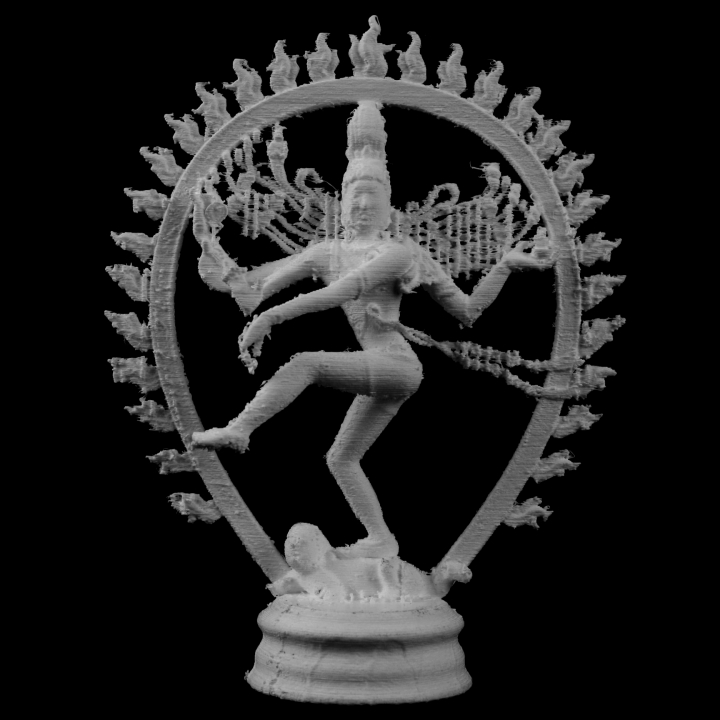
Siva Nataraja at the Guimet Museum, Paris
myminifactory
Nataraja (Tamil: Natchathar or Kooththan), The Lord (or King) of Dance, is a powerful representation of the Hindu God Shiva as the cosmic dancer who performs his divine dance to destroy a weary universe and make preparations for the god Brahma to start the process of creation. The dance of Shiva in Tillai, the traditional name for Chidambaram, forms the central theme for all depictions of Shiva as Nataraja. He is also known as "Sabesan" which splits into "Sabayil aadum eesan" in Tamil, meaning "The Lord who dances on the dais." This form is present in most Shiva temples in South India and is the prime deity in the famous Thillai Nataraja Temple at Chidambaram. The sculpture is usually made from bronze, with Shiva dancing in an aureole of flames, lifting his left leg (or in rare cases, the right leg) and balancing over a demon or dwarf (Apasmara) who symbolizes ignorance. This iconic sculptural symbol is widely recognized in India and is often used as a representation of Indian culture. The two most common forms of Shiva's dance are the Lasya (the gentle form of dance), associated with the creation of the world, and the Tandava (the violent and dangerous dance), associated with the destruction of weary worldviews – tired perspectives and lifestyles. In essence, the Lasya and the Tandava are just two aspects of Shiva's nature; for he destroys in order to create, tearing down to build again. Nataraja is surrounded by The ouroboros or uroboros, an ancient symbol depicting a serpent or dragon eating its own tail. This symbol often represents self-reflexivity or cyclicality, especially in the sense of something constantly re-creating itself, the eternal return, and other things such as the phoenix which operate in cycles that begin anew as soon as they end. The ouroboros has been important in religious and mythological symbolism, but has also been frequently used in alchemical illustrations, where it symbolizes the circular nature of the alchemist's opus. It is also often associated with Gnosticism, Hermeticism, and Hinduism. Carl Jung interpreted the ouroboros as having an archetypal significance to the human psyche. The Jungian psychologist Erich Neumann writes of it as a representation of the pre-ego "dawn state," depicting the undifferentiated infancy experience of both mankind and the individual child. This object is part of "Scan The World." Scan the World is a non-profit initiative introduced by MyMiniFactory, through which we are creating a digital archive of fully 3D printable sculptures, artworks, and landmarks from across the globe for the public to access for free.
With this file you will be able to print Siva Nataraja at the Guimet Museum, Paris with your 3D printer. Click on the button and save the file on your computer to work, edit or customize your design. You can also find more 3D designs for printers on Siva Nataraja at the Guimet Museum, Paris.
